Worse than meltdown, government report says devastating 'melt-through' has occurred at Fukushima; Official suggests Japan could become 'uninhabitable' Natural News via Before It's News. Excerpts:
And senior political official Ichiro Ozawa suggested in an interview with The Wall Street Journal (WSJ) that the Fukushima situation could make the entire country of Japan "unlivable."
Unlivable.
Wait: What? #Fukushima II's Contaminated Water: Cobalt-60, Cesium-134, Cesium-137 Ex-SKF via Rense. Excerpts:
More on the earlier post on 3,000 tons of contaminated water at Fukushima II Nuke Plant.
From Yomiuri Shinbun
Hmmm. So, in a normal operation, radioactive cesium will fly from a nearby nuke plant and somehow land on the basement of the enclosed reactor building. Right.
It's Official: "Nuclear Fuel Has Melted Through Base of Fukushima Plant" ... “The Findings of the Report, Which has Been Given to the International Atomic Energy Agency ... Described a 'Melt-Through' as Being 'Far Worse than a Core Meltdown' and 'The Worst Possibility In a Nuclear Accident' Comprehensive roundup from Washington's Blog.
#Radiation in Tokyo: It's Already a Secondary Radiation Contamination in Koto-Ku From Ex-SKF via Rense.
So the Tokyo Metropolitan government finally admitted to the high air radiation level in "Nanbu Sludge Plant" in Ota-ku in Tokyo, after, it turns out, a Tokyo Metropolitan Assemblyman from Ota-ku went inside the plant and measured the radiation.
"Tobu" or Eastern, Sludge Plant in Koto-ku in Tokyo has an even higher level of radioactive cesium, and the plant may have been spewing radioactive cesium from the incinerator where the radioactive sewage sludge is burned, and has been contaminating the air and the soil in the areas around the plant and downwind (upstream) areas along the Arakawa River.
So it's a secondary radiation contamination.
The eastern part of Tokyo has been registering higher air radiation levels than the western part of Tokyo. Unchecked cesium dispersion from the sludge plant ever since the start of the Fukushima I Nuke Plant accident may be good part of the reason.
Ordinarily, this would freak me out, but since Fukushima's pretty much done us in, who cares, right? After Japan, where's next nuke weak link? Short answer: Vietnam.
Frustration rises three months after Japan disaster Agence France-Presse via Vancouver Sun. Excerpts:
Three months after Japan's March 11 quake and tsunami disaster, frustration is growing as the nuclear crisis shows no sign of abating and nearly 100,000 evacuees remain holed up in crowded shelters.
..
Yet as Japan struggles with its worst postwar crisis, a plunge back into recession and a growing debt mountain, its political leadership is in turmoil, with its fifth premier in five years expected to resign soon.
Bills to finance reconstruction are being held hostage by the conservative opposition(The very definition of "playing politics during disaster."), which demands that centre-left Prime Minister Naoto Kan quit first, accusing him of bungling Japan's post-disaster management.
The death toll from the quake — the world's fourth largest tectonic event since 1900 and Japan's biggest since records started 130 years ago — reached 15,401 on Friday, with 8,146 people reported missing, presumed dead.
More than 90,000 people still live in over 2,400 shelters — most of them jobless and miserable as they spend their days eating donated meals, watching TV and sleeping on tatami mats behind cardboard partitions.
"We are so disappointed with the politicians playing their power games without thinking about us," said Tomie Shiga, a 59-year-old housewife turned radiation refugee who spent months in a Fukushima prefecture shelter.
Toyota sees net profit fall 31% France 24. Excerpts:
Japanese auto giant Toyota on Friday said it expected to book a net profit of 280 billion yen this fiscal year, 31 percent lower than last year after the March 11 quake and tsunami hit production.
The automaker had delayed its estimate for the current year to assess the full scale of impact of the quake on production and sales.
Japan mulls closure of N-reactors by April Oman Tribune.
TOKYO All 54 of Japan’s nuclear reactors may be shut by next April, adding more than $30 billion a year to the country’s energy costs, if communities object to plant operating plans due to safety concerns, trade ministry officials said on Wednesday.
Since the March 11 earthquake and tsunami, which triggered a radiation crisis at the Fukushima Daiichi plant north of Tokyo, concern among local authorities has kept nuclear generators from restarting at least four reactors that had been expected to come online after routine maintenance and inspection. ..
And senior political official Ichiro Ozawa suggested in an interview with The Wall Street Journal (WSJ) that the Fukushima situation could make the entire country of Japan "unlivable."
Unlivable.
Wait: What? #Fukushima II's Contaminated Water: Cobalt-60, Cesium-134, Cesium-137 Ex-SKF via Rense. Excerpts:
More on the earlier post on 3,000 tons of contaminated water at Fukushima II Nuke Plant.
From Yomiuri Shinbun
TEPCO disclosed on June 8 that it has entered into negotiations with the government agencies and local municipalities to treat the contaminated water in the basements of the buildings at Fukushima II Nuclear Power Plant and release it into the ocean.
The water is from the tsunami [on March 11], and it contains radioactive cobalt-60 which probably came from the rusty pipes, and cesium-137 and cesium-134 which are considered to have flown from Fukushima I Nuclear Power Plant 10 kilometers north. The level of contamination is 10 to 30 times the limit allowed for the discharge into the ocean.
Hmmm. So, in a normal operation, radioactive cesium will fly from a nearby nuke plant and somehow land on the basement of the enclosed reactor building. Right.
It's Official: "Nuclear Fuel Has Melted Through Base of Fukushima Plant" ... “The Findings of the Report, Which has Been Given to the International Atomic Energy Agency ... Described a 'Melt-Through' as Being 'Far Worse than a Core Meltdown' and 'The Worst Possibility In a Nuclear Accident' Comprehensive roundup from Washington's Blog.
#Radiation in Tokyo: It's Already a Secondary Radiation Contamination in Koto-Ku From Ex-SKF via Rense.
So the Tokyo Metropolitan government finally admitted to the high air radiation level in "Nanbu Sludge Plant" in Ota-ku in Tokyo, after, it turns out, a Tokyo Metropolitan Assemblyman from Ota-ku went inside the plant and measured the radiation.
"Tobu" or Eastern, Sludge Plant in Koto-ku in Tokyo has an even higher level of radioactive cesium, and the plant may have been spewing radioactive cesium from the incinerator where the radioactive sewage sludge is burned, and has been contaminating the air and the soil in the areas around the plant and downwind (upstream) areas along the Arakawa River.
So it's a secondary radiation contamination.
The eastern part of Tokyo has been registering higher air radiation levels than the western part of Tokyo. Unchecked cesium dispersion from the sludge plant ever since the start of the Fukushima I Nuke Plant accident may be good part of the reason.
Ordinarily, this would freak me out, but since Fukushima's pretty much done us in, who cares, right? After Japan, where's next nuke weak link? Short answer: Vietnam.
Frustration rises three months after Japan disaster Agence France-Presse via Vancouver Sun. Excerpts:
Three months after Japan's March 11 quake and tsunami disaster, frustration is growing as the nuclear crisis shows no sign of abating and nearly 100,000 evacuees remain holed up in crowded shelters.
..
Yet as Japan struggles with its worst postwar crisis, a plunge back into recession and a growing debt mountain, its political leadership is in turmoil, with its fifth premier in five years expected to resign soon.
Bills to finance reconstruction are being held hostage by the conservative opposition(The very definition of "playing politics during disaster."), which demands that centre-left Prime Minister Naoto Kan quit first, accusing him of bungling Japan's post-disaster management.
The death toll from the quake — the world's fourth largest tectonic event since 1900 and Japan's biggest since records started 130 years ago — reached 15,401 on Friday, with 8,146 people reported missing, presumed dead.
More than 90,000 people still live in over 2,400 shelters — most of them jobless and miserable as they spend their days eating donated meals, watching TV and sleeping on tatami mats behind cardboard partitions.
"We are so disappointed with the politicians playing their power games without thinking about us," said Tomie Shiga, a 59-year-old housewife turned radiation refugee who spent months in a Fukushima prefecture shelter.
Toyota sees net profit fall 31% France 24. Excerpts:
Japanese auto giant Toyota on Friday said it expected to book a net profit of 280 billion yen this fiscal year, 31 percent lower than last year after the March 11 quake and tsunami hit production.
The automaker had delayed its estimate for the current year to assess the full scale of impact of the quake on production and sales.
Japan mulls closure of N-reactors by April Oman Tribune.
TOKYO All 54 of Japan’s nuclear reactors may be shut by next April, adding more than $30 billion a year to the country’s energy costs, if communities object to plant operating plans due to safety concerns, trade ministry officials said on Wednesday.
Since the March 11 earthquake and tsunami, which triggered a radiation crisis at the Fukushima Daiichi plant north of Tokyo, concern among local authorities has kept nuclear generators from restarting at least four reactors that had been expected to come online after routine maintenance and inspection. ..













































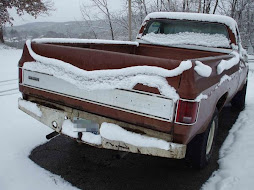

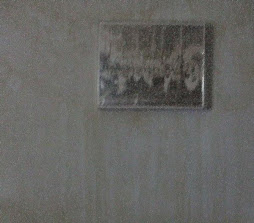






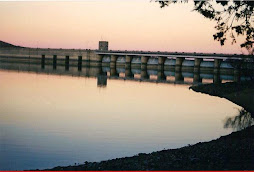







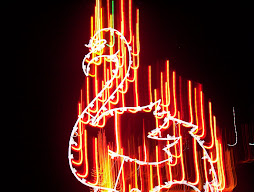


















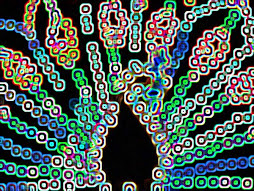























No comments:
Post a Comment